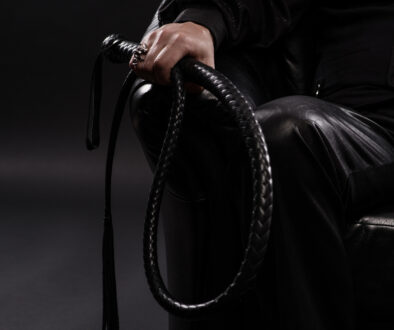Dominant vs. Domineering: Understanding the True Nature of Power in BDSM
In the world of BDSM, where power exchange is both art and agreement, the difference between a Dominant and a domineering person can be subtle—yet everything. It’s a distinction that shapes relationships, defines experiences, and speaks volumes about the intent behind the actions.
The Fine Line: Dominant vs. Domineering
We’ve all heard it said:
“A Dominant leads— a domineer drives.”
On the surface, both roles may exhibit control, command, and influence. But their source of power and intentions set them miles apart. Let’s look at the basic definitions:
-
Dominate: To control, govern, or rule by superior authority or power; to exert a strong guiding influence over others.
Synonyms: lead, influence, manage, master, direct. -
Domineer: To rule over arbitrarily or arrogantly; to be cruel, overbearing, or oppressive.
Synonyms: bully, intimidate, threaten, tyrannize.
In healthy BDSM dynamics, a Dominant earns submission through trust, care, and emotional strength. In contrast, a domineering person relies on fear, control, and insecurity—traits that are not only unsustainable but also toxic
The Role of Intent in Power Exchange
Here’s the truth: Intent transforms everything. The same physical act—a touch, a command, a restriction—can feel either empowering or violating depending on the Dominant’s intent and the presence of mutual consent.
-
A caress from a loving Dominant fosters safety and connection.
-
The same caress from someone arrogant or cruel can feel invasive and unsettling.
That’s why emotional intelligence and self-awareness are critical traits of a responsible Dom. While behavior can look the same on the outside, intent is what separates dominance from harm.
What Makes a Good Dominant?
The best Dominants lead with strength, not ego. They don’t perform dominance—they embody it.
Key characteristics of a healthy Dominant include:
-
Emotional maturity and self-control
-
A grounded sense of self—not driven by the need to prove power
-
Respect for boundaries and enthusiastic consent
-
A commitment to mutual growth and communication
-
Compatibility with their submissive’s needs and desires
In contrast, domineering individuals often act out of insecurity, needing to assert control to feel powerful. Their dynamics may start with intensity but often crumble due to lack of trust, empathy, and respect.
Compatibility Matters More Than Archetypes
Some might expect a “real” Dom to be bold, intimidating, or overtly dominant at all times. But true Dominants come in all forms. The quiet, “geeky” or “soft-spoken” type can also be deeply loving, sadistic, and strong in their dominance.
At the end of the day, compatibility is everything. A Dominant who is aligned with their submissive’s emotional, psychological, and physical needs will always build a stronger, more sustainable D/s dynamic than someone who simply checks off the “dominant” stereotype.
Power exchange is about intention, not domination for domination’s sake.
It’s about respectful leadership, not arrogant control.
And it’s about mutual fulfillment, not ego validation.
A good Dominant nurtures strength, growth, and connection. A domineer demands obedience at the cost of trust. Knowing the difference—and living it—is what separates a lasting, fulfilling D/s relationship from one built on fear or fantasy alone.


